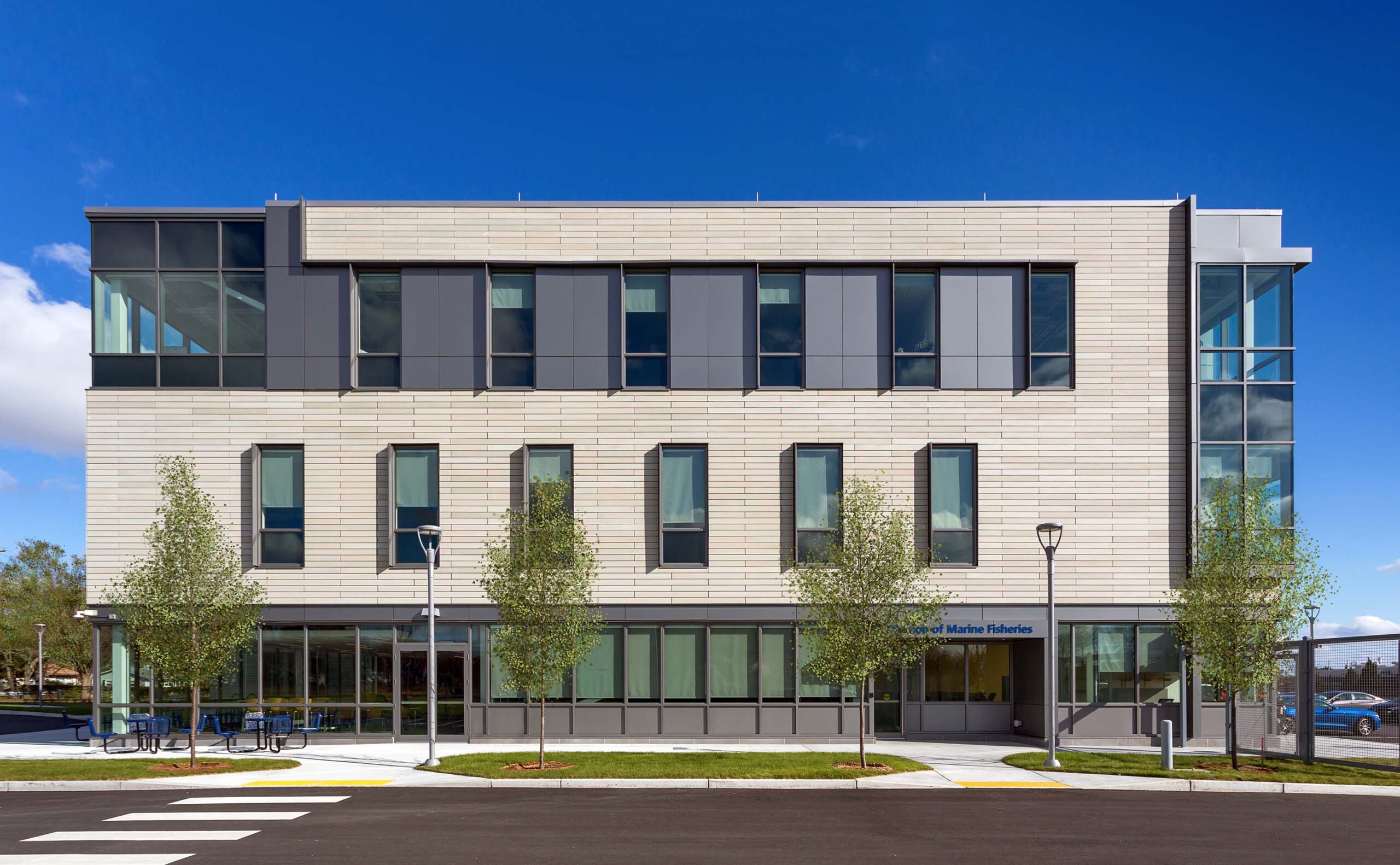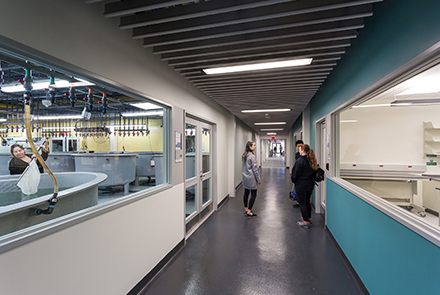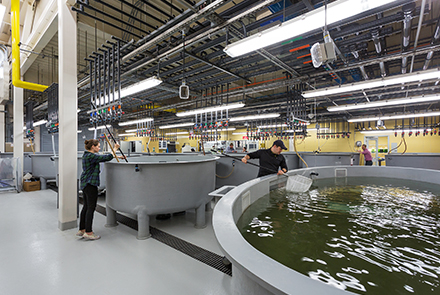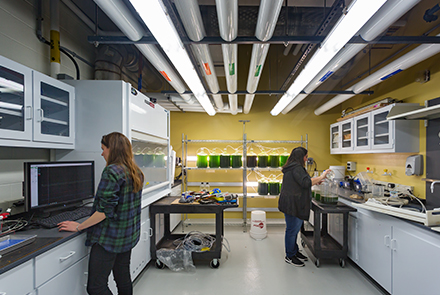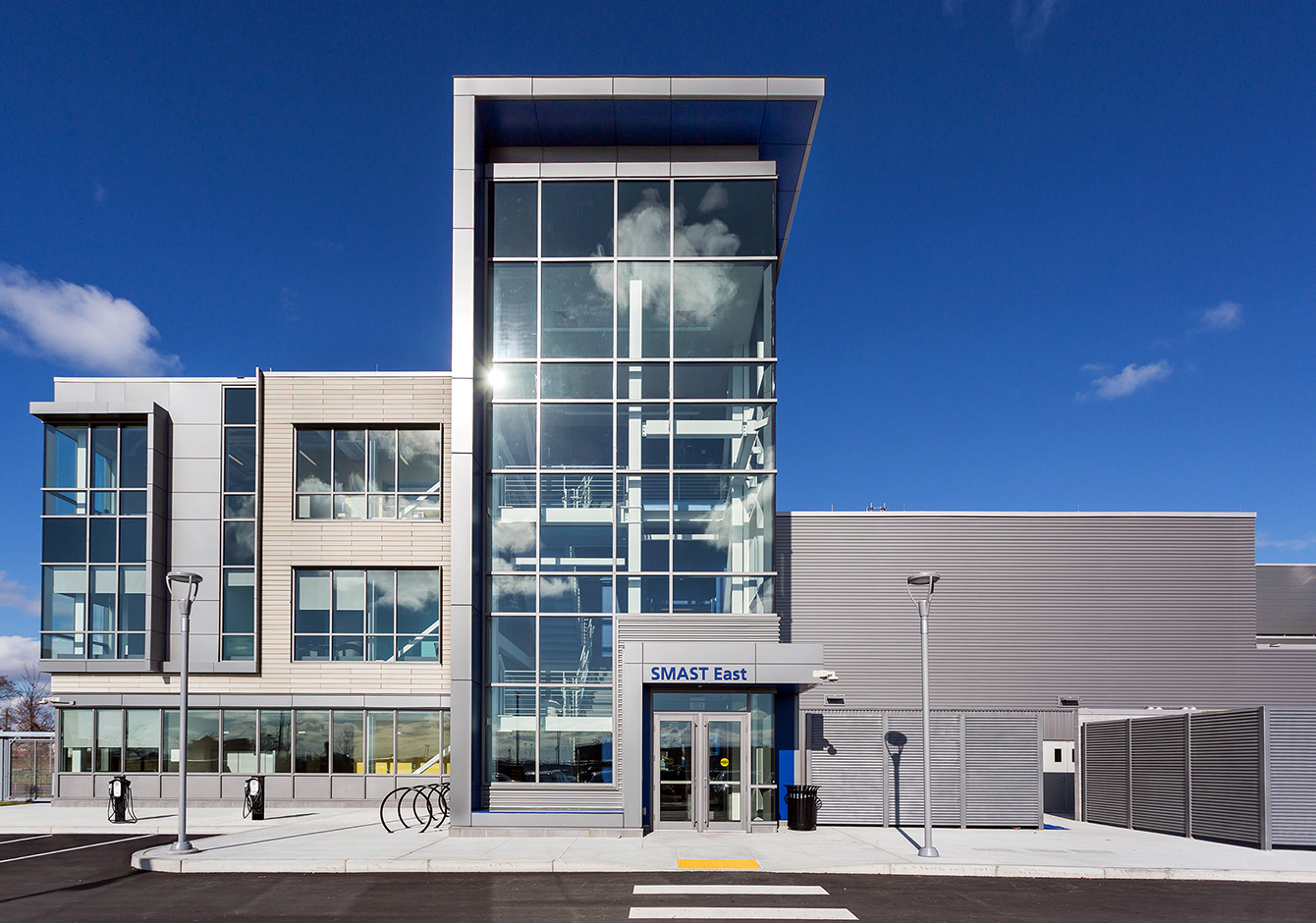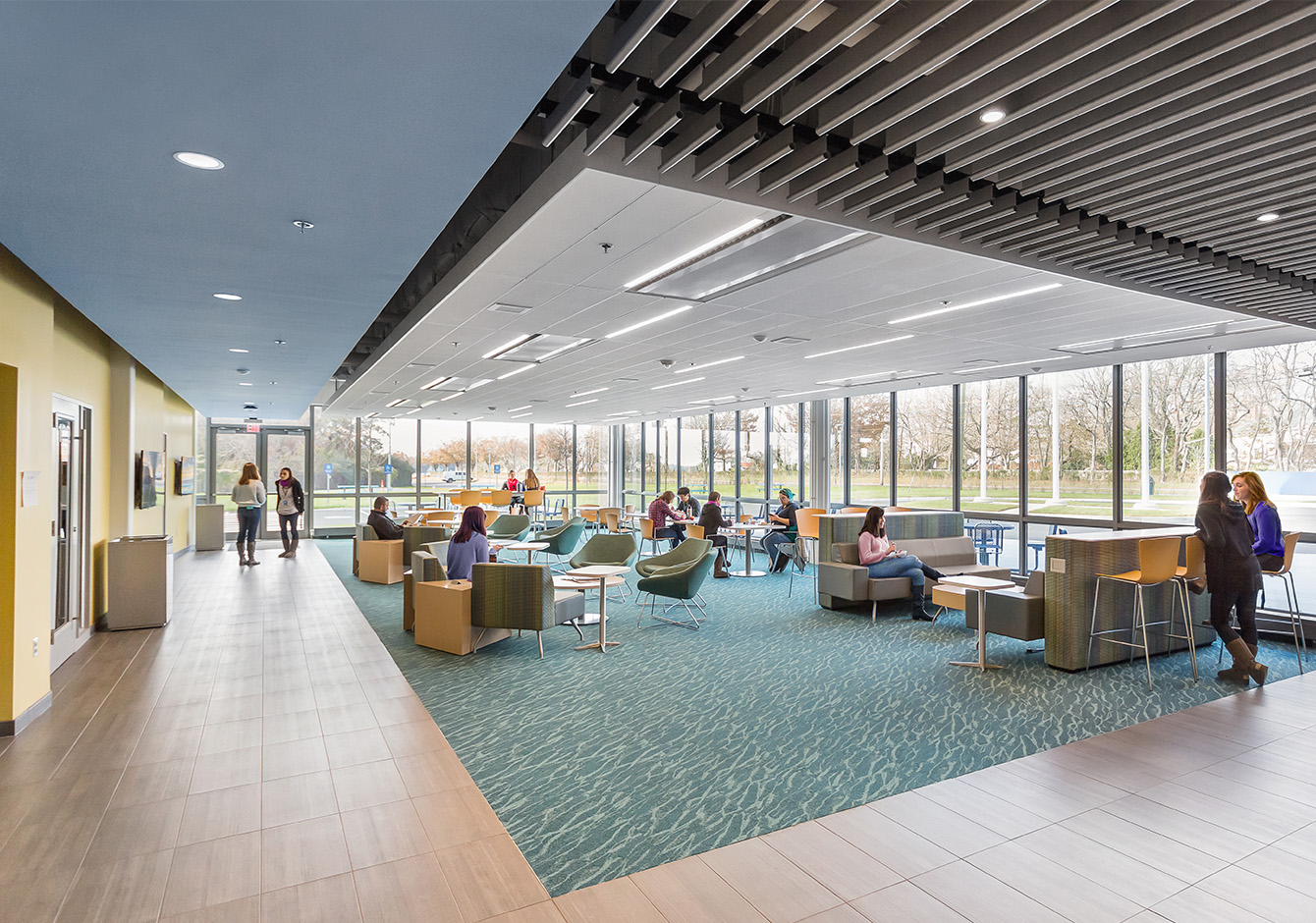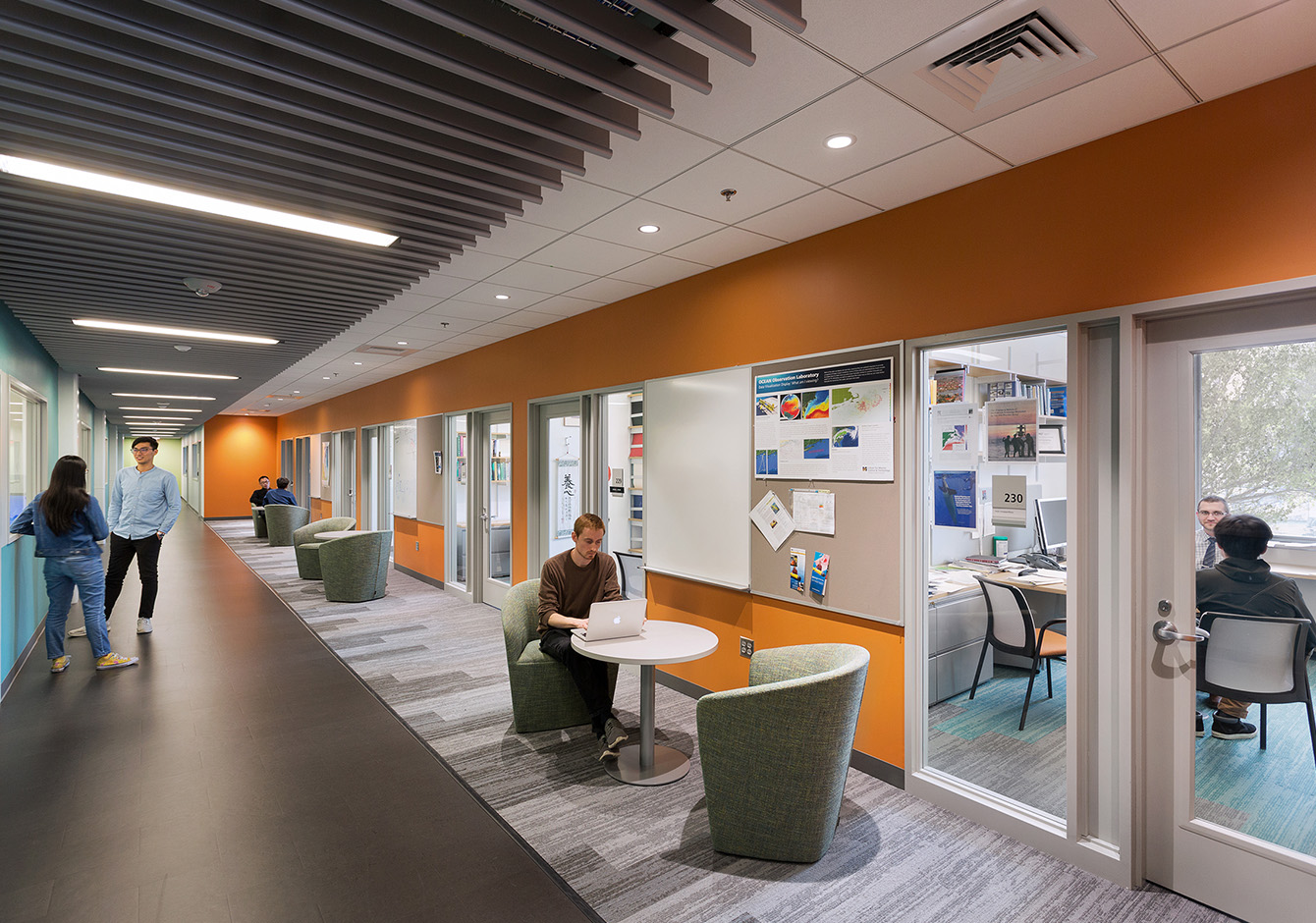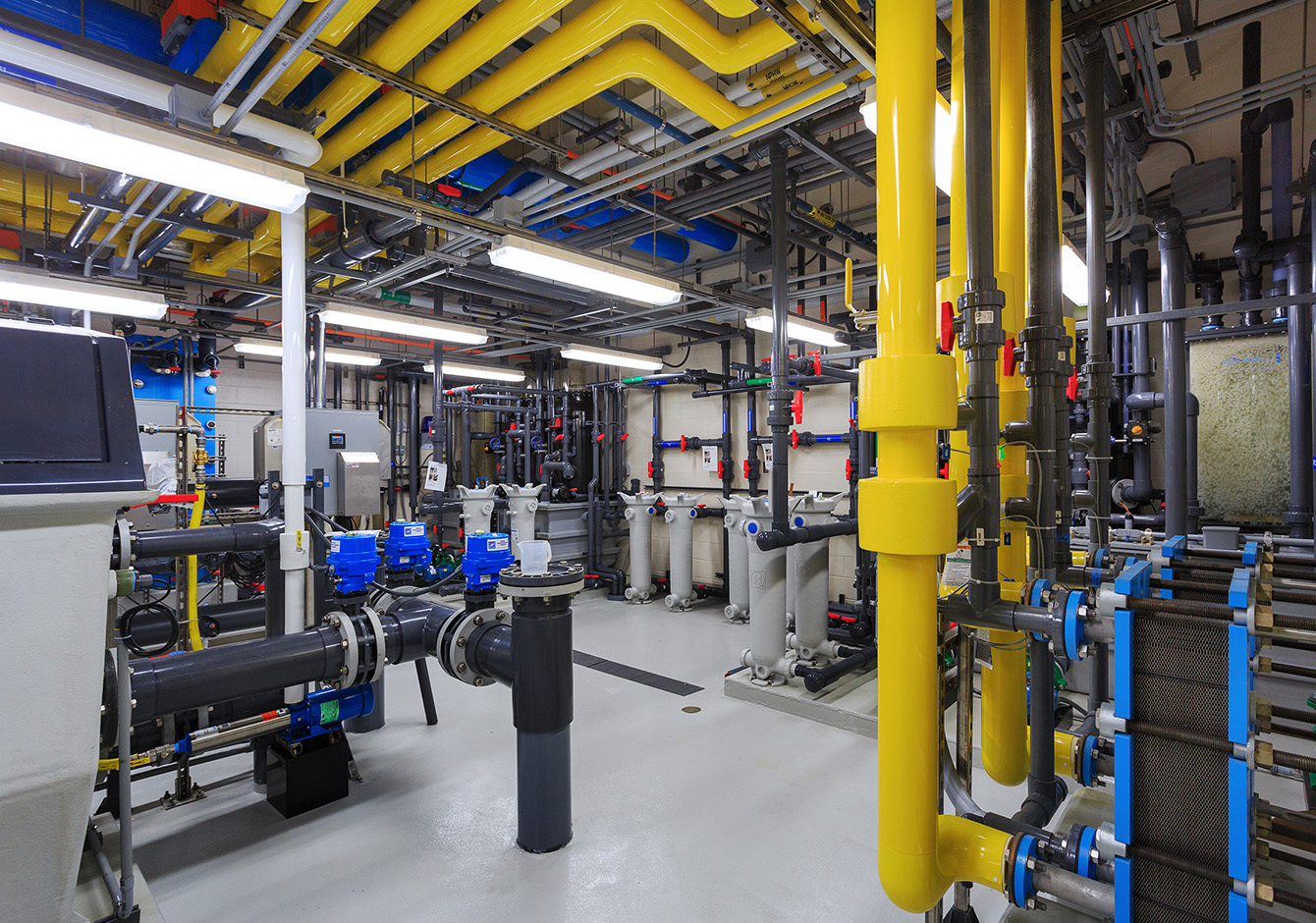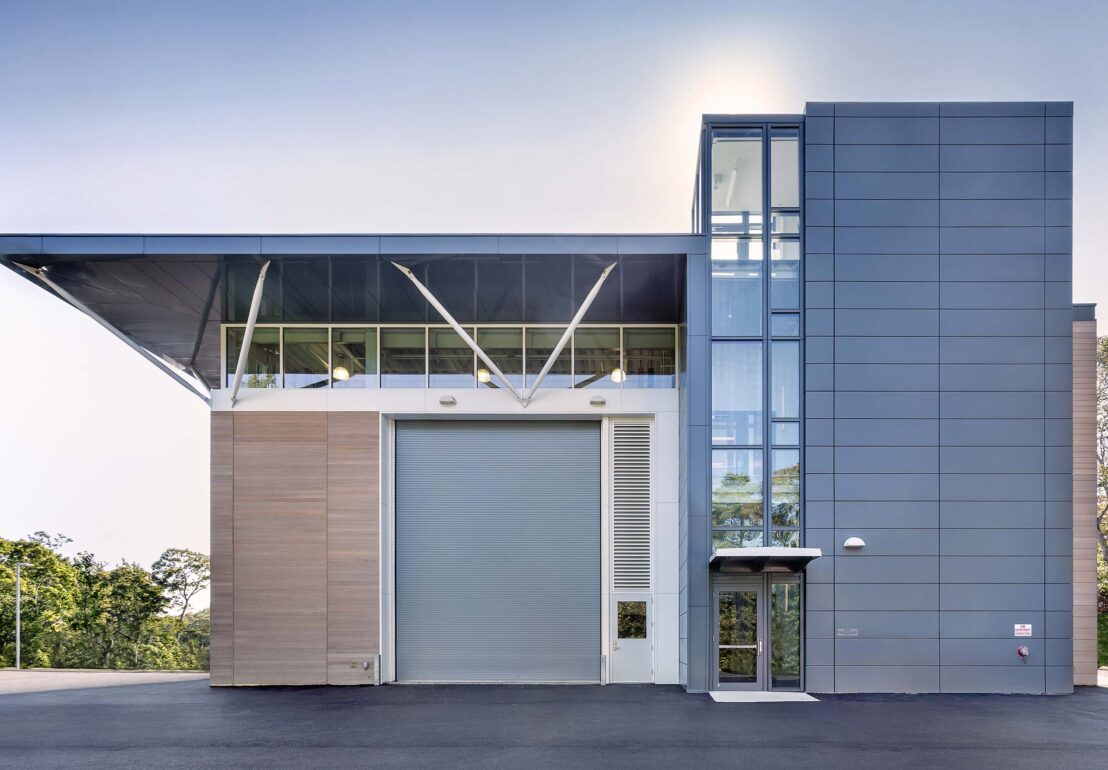The building includes highly specialized research labs to support interdisciplinary research in Biochemical Cycling, Marine and Coastal Computational Modeling, Fisheries Science, Marine Renewable Energy, Ocean Observing/Sensing, and Ocean Physics. They include a seawater facility with holding tanks for marine organism research and large flume research tank; a supercomputer server cluster for climate and oceanographic computational modeling, and high-bay storage to support fabrication and staging of ocean-going experimental equipment.
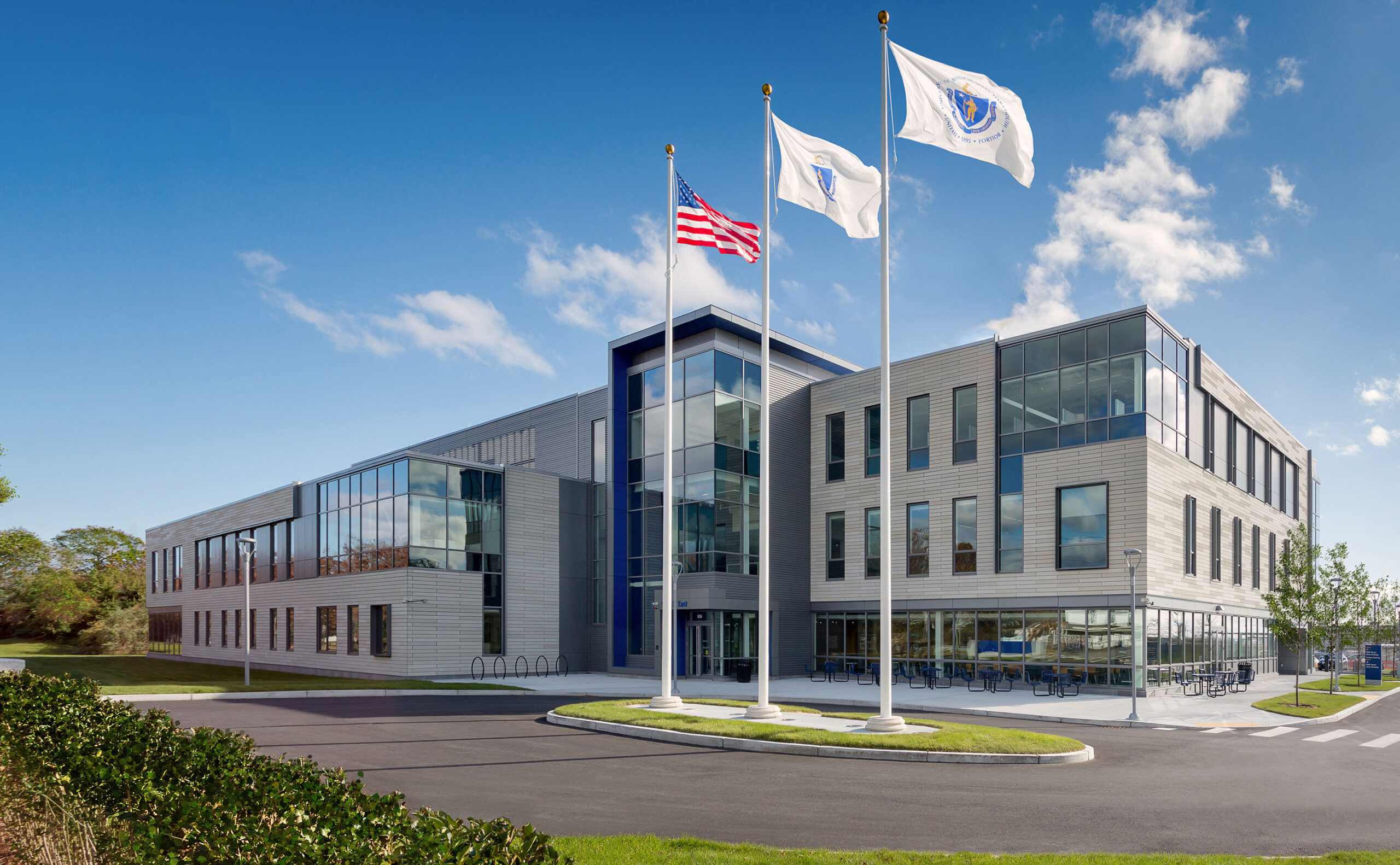
University of Massachusetts Dartmouth
School for Marine Science and Technology Research Building
New Bedford, Massachusetts
Size
60,000 gsf new
32,500 gsf renovations
Services
Feasibility Study
Programming
Lab Planning
Architecture
Certifications
LEED Silver
The expansion of the School for Marine Science and Technology (SMAST) with the construction of a new building consolidates the University of Massachusetts Dartmouth’s Marine Science research and teaching program on this satellite campus. The new building supports the SMAST research mission with flexible wet, dry, and computational laboratories, meeting and interaction space, along with faculty and graduate student offices. In addition, the building accommodates the Massachusetts Division of Marine Fisheries (DMF) South Coast operations, facilitating continuing collaborations between SMAST and DMF in support of sustainable fisheries.
